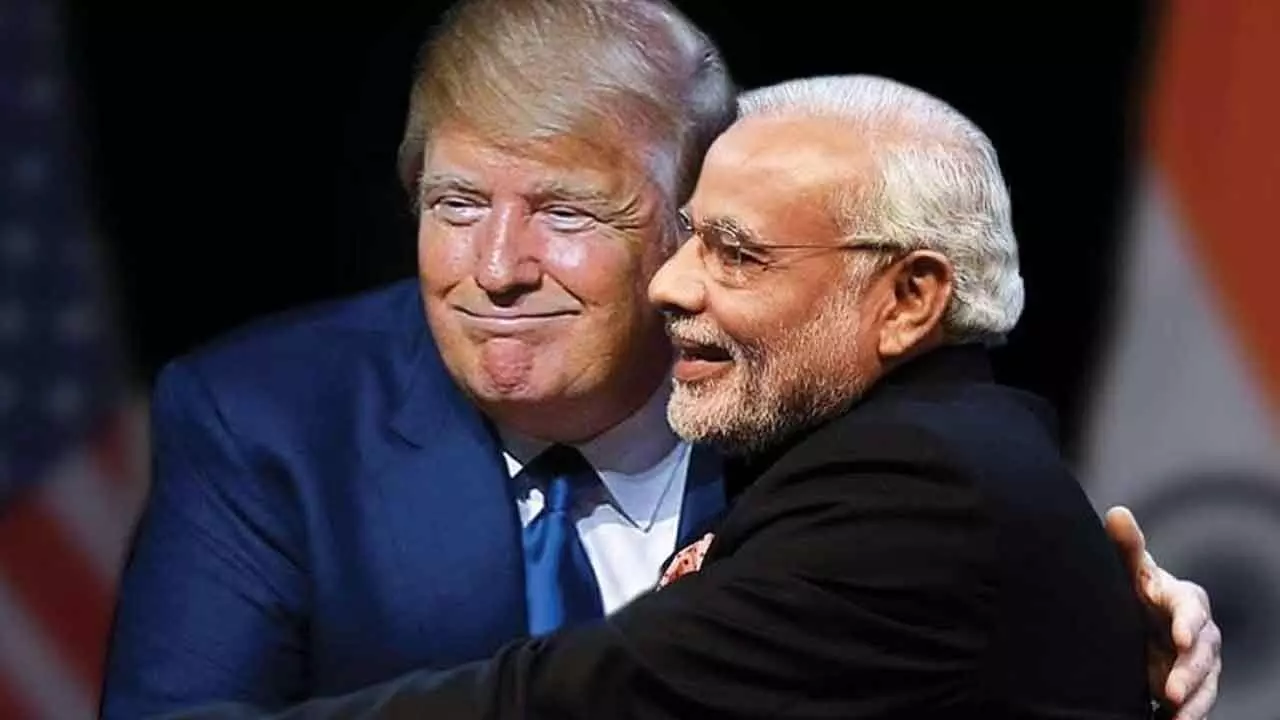The Trump ‘Effect’ Can Adversely Impact India’s Economic Landscape
The impact ranges from trade realignments to currency fluctuations, offering both opportunities and challenges for the economy
The Trump ‘Effect’ Can Adversely Impact India’s Economic Landscape

There are concerns that his foreign policy could undermine U.S. commitments in Asia, potentially benefiting China—a scenario that would not align with India’s strategic interests
The United States is India’s largest export destination, accounting for 18 per cent of the country’s total exports in FY24. Any shifts in US policies can have significant implications for India’s economic landscape.
The potential impact ranges from trade realignments to currency fluctuations, offering both opportunities and challenges for the economy. However, backed by strong economic fundamentals, significant foreign exchange reserves, and improved public finances, the rupee is expected to stabilise, ensuring a favourable investment environment.
Moody’s has said that, “In the Asia-Pacific region, the world may witness a reallocation of trade and investment flows away from China due to heightened US scrutiny in strategic sectors. This shift will likely negatively impact China’s economy and dampen regional growth. Conversely, nations such as India and those in ASEAN could find new opportunities in this changing landscape.”
Moreover, Donald Trump’s proposed tax cuts and reforms could lead to higher disposable incomes for US consumers, indirectly benefiting India’s export sector. Sectors like IT services and pharmaceuticals, which have traditionally been strong export areas for India, may see an uptick in demand.
While Moody’s suggests that India could emerge as a net beneficiary, these advantages are contingent on India’s ability to maintain its high-growth trajectory. Currently, India is projected to grow between 6.5 per cent and 6.8 per cent in FY24-25. However, recent economic data indicates a slowdown, with Q2 FY25 growth dropping to a seven-quarter low of 5.4 per cent.
This deceleration is primarily driven by a decline in urban consumer spending, which traditionally accounts for over 50 per cent of the GDP. Rising inflation, stagnant wages, and weak demand for discretionary goods such as automobiles have led to subdued economic activity. Additionally, lagging government capital expenditure, coupled with election-related uncertainties, further dampen the economic sentiment.
Trump’s “America First” policy may lead to increased trade friction between the two nations. He has labelled India as a “tariff king,” expressing dissatisfaction with high Indian tariffs on U.S. imports. His proposed tariffs could shrink India’s GDP by an estimated 0.1 per cent by 2028 if implemented, particularly affecting sectors like IT and pharmaceuticals that rely heavily on the U.S. market.
Under Trump’s administration, immigration policies may become more restrictive, particularly concerning H-1B visas crucial for Indian professionals in the tech industry. His previous efforts to tighten visa regulations could resurface, impacting thousands of Indian workers seeking opportunities in the U.S. Although he hinted at making immigration easier, his unpredictable nature leaves many uncertainties for Indian immigrants.
Trump’s unpredictability poses a significant risk to international relations. His past offers to mediate between India and Pakistan over Kashmir were unwelcome in New Delhi, and his approach to alliances has often been contentious. There are concerns that his foreign policy could undermine U.S. commitments in Asia, potentially benefiting China—a scenario that would not align with India’s strategic interests.
Trump’s policies might impact regional security in South Asia significantly. His stance on Pakistan and China could alter India’s strategic calculations, particularly regarding military support or arms sales from the U.S., which are vital for India’s defence posture. His economic policies may influence foreign direct investment (FDI) from the U.S. to India, impacting various sectors differently based on his trade policies.
In recent years, China has been a major factor of convergence for India and the United States. Their ties have played a vital role in advancing not only a sturdier bilateral framework but also boosting the emergence of security architecture in the region via minilaterals like the Quad and the Indo-Pacific Economic Framework for Prosperity (IPEF).
The Quad, which was notably revived under Trump’s first term, has gone from strength to strength, while IPEF’s new supply chain agreement has the potential to revitalize the Indo-Pacific stakeholders’ solidarity against countering China’s dominance and its strides in technology.
In the areas of trade, Trump’s “America First” stance will impact all emerging economies, including India. India and the United States will assume protectionist stands and their differences will continue to hamper all-round strategic growth.
Looking back at Trump’s first term, this was an area of concern between India and the U.S.: Trump had at the time criticized India’s tariffs system (harshly calling it the “king” of tariffs) and the India-U.S. trade deal had also fallen through. Not much has changed on that point.
However, the push on bilateral defence ties between the two will be accelerated, and India would be looking to benefit from greater technological and defense cooperation that has already been jump-started. For instance, the initiative on Critical and Emerging Technologies (iCET) looks to facilitate joint production of jet engines, among other important projects.

